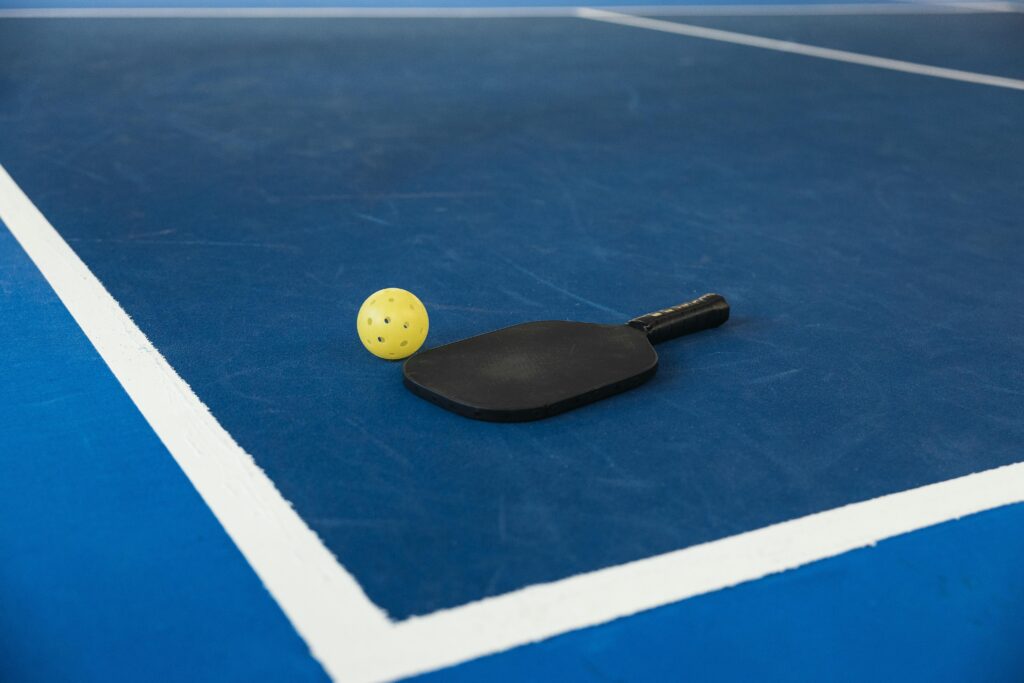Introduction
Pickleball, a sport combining elements of tennis, badminton, and ping-pong, has been rapidly gaining popularity worldwide. With its simple rules and engaging gameplay, pickleball is enjoyed by people of all ages. This guide provides an overview of pickleball, including its history, rules, equipment, techniques, and health benefits.
The History of Pickleball
Pickleball was invented in 1965 by Joel Pritchard, Bill Bell, and Barney McCallum on Bainbridge Island, Washington. Seeking a fun activity for their families, they created a game using a badminton court, a lowered net, and a perforated plastic ball. The sport quickly gained popularity and formalized rules were established. In 1984, the USA Pickleball Association (USAPA) was formed to standardize the game and promote its growth. Today, pickleball is played globally, governed by the International Federation of Pickleball (IFP).
Pickleball Rules
- Basic Rules
Pickleball is played on a court measuring 20 feet by 44 feet with a net height of 36 inches at the sidelines and 34 inches at the center. The court is divided into the right and left service areas, the kitchen (non-volley zone), and the baseline. Players use paddles and a plastic ball with holes. The game is typically played to 11 points, with a team needing to win by at least two points. Only the serving team can score points. The serve must be underhand, cross-court, and clear the kitchen.

2.Advanced Rules
In doubles play, which is more common than singles, teamwork and coordination are crucial. Faults include hitting the ball out of bounds, not clearing the net, stepping into the kitchen to volley a ball, and double bouncing the ball on one side. These faults result in losing the serve or giving a point to the opposing team.
Equipment Needed For Pickleball
1. Paddles
Pickleball paddles are made from materials like wood, composite, and graphite. Wooden paddles are the heaviest and least expensive, composite paddles offer a balance of weight and control, and graphite paddles are the lightest, providing excellent power and precision.
2. Balls
Pickleball balls are made of durable plastic with holes and come in indoor and outdoor varieties. Indoor balls have larger holes and are lighter, while outdoor balls are heavier with smaller holes to withstand wind and outdoor conditions.
3. Court
A standard pickleball court can be set up in a variety of locations, from gymnasiums to driveways. Regular maintenance, such as keeping the surface clean and the net properly tensioned, ensures optimal playing conditions.
Pickleball: Techniques and Strategies
1. Pickleball Techniques
- Serving Techniques
A good serve sets the tone for the point. Practice underhand serves, aiming for depth and placement to challenge your opponent.
- Forehand and Backhand Strokes
Developing strong forehand and backhand strokes is essential. Focus on proper grip, stance, and follow-through to generate power and accuracy.
- Dinking
Dinking is a soft shot that lands in the kitchen, forcing your opponent to move forward and hit an awkward return. It’s a strategic move to gain control of the game.
- Volleying
Volleying involves hitting the ball out of the air before it bounces. It’s a crucial skill for aggressive net play, allowing you to put pressure on your opponents.
2.Strategies
- Positioning on the Court
Proper positioning is vital. Stay close to the baseline when serving and move up to the net when playing offensively. In doubles, maintain good spacing with your partner to cover the court effectively.
- Communication in Doubles
Clear communication helps avoid confusion and errors. Use verbal cues and hand signals to indicate who will take the shot and where to position yourselves.
- Offensive and Defensive Strategies
Mix up your shots to keep opponents guessing. Use offensive shots like smashes and aggressive volleys to win points, and rely on defensive dinks and lobs to extend rallies and force errors.
Common Mistakes to Avoid in Pickleball
- Faults and Violations
Avoid common faults such as stepping into the kitchen on a volley or serving above the waist. Understanding and adhering to the rules will prevent unnecessary point losses.
- Positioning Errors
Maintain proper court positioning. Stay alert and ready to move, ensuring you and your partner cover the court efficiently.
- Poor Shot Selection
Choose your shots wisely. Avoid risky shots with low success rates and focus on high-percentage plays that keep you in control.
Pickleball: Health Benefits of Playing
- Physical Health Benefits
Playing pickleball provides cardiovascular exercise, strengthens muscles, and improves flexibility and balance. The sport’s dynamic movements and moderate intensity make it an excellent workout for maintaining overall fitness.
- Mental Health Benefits
Pickleball can reduce stress, improve concentration, and foster social interaction. The sport’s social nature encourages camaraderie and community, enhancing mental well-being.
Conclusion
Pickleball is more than just a game; it’s a delightful blend of fun, fitness, and community. Whether you’re a seasoned athlete or a complete beginner, pickleball offers something for everyone. Its simple rules, combined with the opportunity for strategic play, make it accessible yet challenging. Beyond the physical benefits, the social aspect of pickleball fosters friendships and a sense of belonging. So, grab a paddle, find a court, and start enjoying the numerous benefits of this exciting sport. Happy playing!
Learn Everything About Pickleball: Visit Us Today!
– Most Asked Question –

